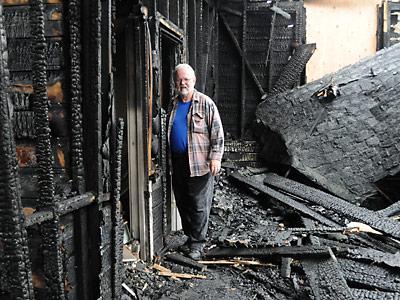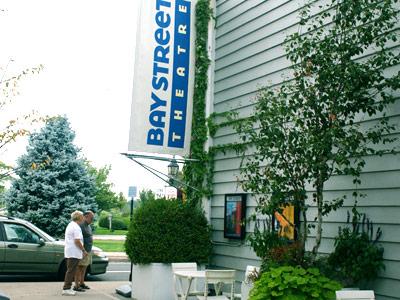The Time Has Come
The Time Has Come

The old Bulova building on Hampton Street in Sag Harbor has seen better days, and lots of them. The cornerstone was laid in 1881 for the red-brick industrial center — the Joseph Fahys Watchcase Factory — which helped revitalize Sag Harbor in the wake of the diminishing whale industry, hiring unemployed seamen and immigrants and providing some of the most modern working-man perks of the period.
Today, the building is held up with scaffolding following a partial collapse in 2005, its windows boarded over, graffiti on its flanks, surrounded by weeds and other signs of neglect.
But the aged edifice is about to get a new lease on life. Three years after village approvals were secured, Cape Advisors, a real estate and hospitality development company, has teamed up with the Deutsche Bank Commercial Real Estate Group and announced a $60 million investment to fully fund the development and rehabilitation of what will become known as the Watchcase Factory Lofts.
Cape Advisors’ project, which features 65 lofts and townhomes on the 2.3-acre lot, along with a pool and spa facility and underground parking garage, had been under review by the Sag Harbor Zoning Board of Appeals for two years, and was approved in early 2008.
There were also environmental concerns. Hazardous materials were dumped at the site from 1936 to 1981, causing its classification as one of three Superfund sites in Sag Harbor. Once the property was deemed safe enough to be removed from the Superfund list by the Environmental Protection Agency, the site was ready to be renovated. The village waived the need for a draft environmental impact statement from Cape Advisors. However, after Cape Advisors bought the property in 2006, there was an arduous approval process which included dozens of public hearings, with concerns that ranged from lighting to parking and traffic patterns.
Once all the approvals came through, it was a question of coming up with the financing, the very year that financial markets took a beating.
“We are extremely pleased that in these difficult economic times we were able to partner with Deutsche Bank in moving forward with this exciting project,” said Craig Wood, co-managing partner of Cape Advisors, in a press release. “This fall, over 30 years after the Bulova Watchcase Factory closed, we will begin construction to restore this historic building and fully integrate it into the fabric of the Sag Harbor community.”
Cape Advisors plans to maintain the factory feel of the building, with high ceilings, large windows, and old beams.
Mr. Fahys sold his plant to Arde Bulova in 1931, and the building continued to produce watchcases until 1975, with a brief interlude during World War II when Bulova made munitions for the armed forces.
Over the past 30 years there have been several attempts to take over the building, including an offer from Patrick Malloy III, who owns several buildings in Sag Harbor.
Mr. Wood said the company plans to break ground for the project in the next 30 to 45 days. Prices will not be set until Cape Advisors files an offering plan with the Attorney General’s office, probably sometime in the next three months.






